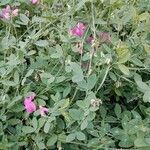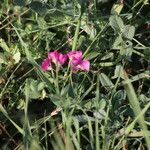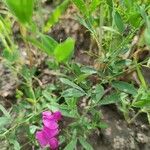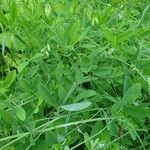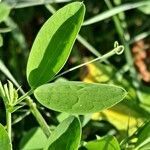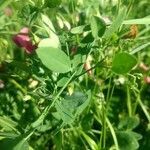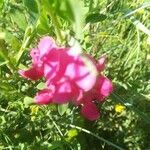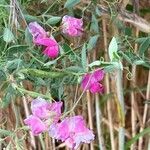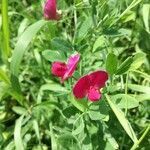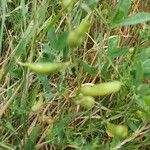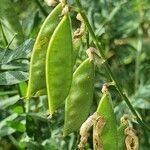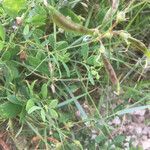Rhizomatous perennial with small tubers; stems 2-angled, wingless, to 8 dm; stipules lanceolate, 5–12 mm, with a single short basal lobe; lfls 2, oblanceolate to elliptic, 1.5–3 cm; peduncles 5–8 cm, bearing a crowded raceme of 2–10 red-purple fls 12–16 mm, the standard broader than long; 2n=14. Native of Europe and w. Asia, intr. at a few scattered stations chiefly toward the n. part of our range.
A herb. It keeps growing from year to year. It is a climbing plant. The rhizomes bear small tubers. The stems are 30-120 cm tall. The leaves are compound with 1 pair of leaflets. The flowers are in groups or 2-7 flowers. They are purple-red.
